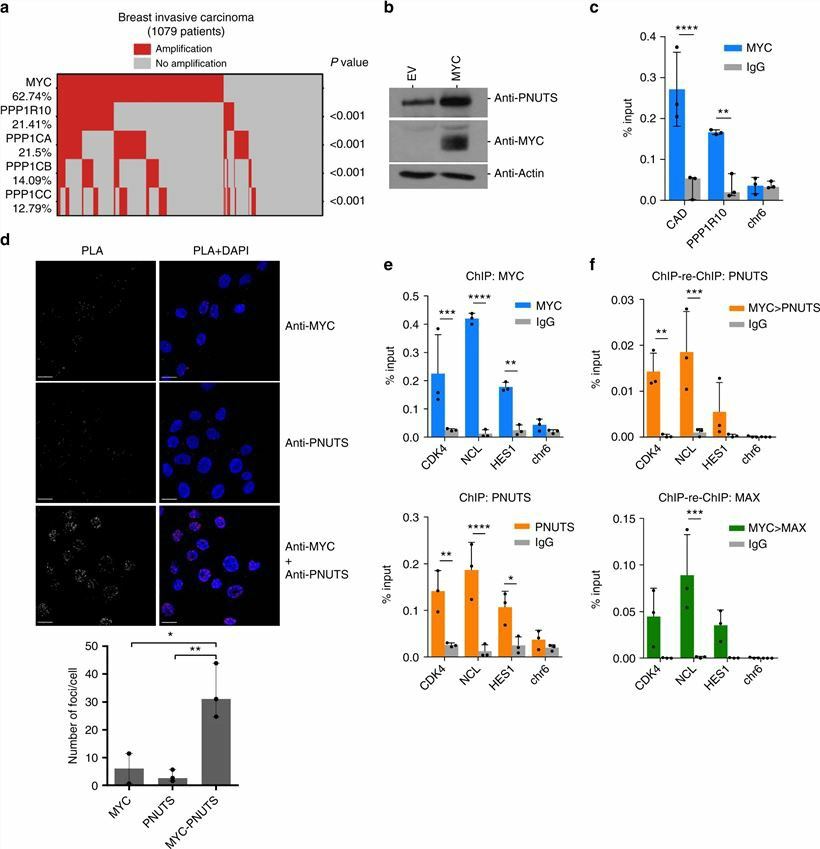PPP1R10 and Associated Diseases
At present, the gene therapy platform of Creative Biolabs is equipped with the most advanced instruments and a professional team. In addition to the comprehensive and high-quality one-stop service, we also provide flexible gene therapy customization services to meet different needs. We are happy to share background knowledge related to gene therapy, here we provide a brief introduction to the protein phosphatase 1 regulatory subunit 10 (PPP1R10) gene.
Introduction of PPP1R10
PPP1R10 is located in the major histocompatibility complex class I region on chromosome 6. This gene is a protein-coding gene that encodes protein phosphatase-1 (PP1) binding protein. The protein encoded by PPP1R10, also known as human PP1 nuclear targeting protein (PNUTS), belongs to a targeting subunit of PP1 regulatory proteins that function to target PP1 to specific subcellular locations and modulate its activity towards specific substrates at these sites. PP1 is a serine/threonine phosphatase that plays critical roles in many aspects of cellular physiology. PPP1R10 is implicated in many processes including cell cycle progression, cell growth and survival, DNA repair, RNA processing and apoptosis by regulating the activity of PP1.
PPP1R10 and Associated Diseases
PPP1R10 is associated with a variety of diseases, including adrenal pheochromocytoma and hypermethioninemia caused by adenosine kinase deficiency. PPP1R10 is a bifunctional gene that not only encodes PPP1R10 protein but also encodes a long non-coding RNA (lncRNA) through alternative splicing. This lncRNA may play an important role in mediating epithelial-mesenchymal transition, which is an important process for tissue and organ formation as well as for tumor development and metastasis. Studies have shown that this lncRNA has a higher expression level in human breast tumor tissues compared with normal breast tissues. Furthermore, there are many lines of evidence suggesting that targeting the PPP1R10 protein may have antitumor activity. For example, PPP1R10 knockdown contributed to increasing apoptosis in breast, ovarian, and colon cancer cells and enhancing the apoptotic effect of specific cyclin-dependent kinase inhibitors in breast and colon cancer cells.
 Fig.1 MYC and PPP1R10 (PNUTS) are co-amplified in cancer. (Dingar, 2018)
Fig.1 MYC and PPP1R10 (PNUTS) are co-amplified in cancer. (Dingar, 2018)
PPP1R10-related Pathways in Cancers
PPP1R10 was identified as a phosphatase and tensin homologue (PTEN) associated protein. PTEN is defined as a tumor suppressor gene that antagonizes the phosphoinositide 3-kinase (PI3K)-AKT-mammalian target of the rapamycin (mTOR) pathway to regulate a variety of cellular processes such as survival, growth, proliferation, motility, invasion energy metabolism and angiogenesis. PPP1R10 interacts with the lipid-binding domain of PTEN and sequesters it in the nucleus. Depletion of PPP1R10 accelerates apoptosis and decreases cell proliferation in a PTEN-dependent manner. Therefore, PPP1R10 was defined as a novel PTEN regulator and a potential oncogene.
As an expert in the field of gene therapy, our experienced team of experts will work with you to customize reasonable solutions to promote breakthrough progress in your project. With a continuous focus on quality, we take pride in meeting the needs of customers in more than 50 countries and regions both domestically and abroad. If you are interested in our gene therapy services, please contact us for more information and a detailed quotation.
Reference
- Dingar, D.; et al. MYC dephosphorylation by the PP1/PNUTS phosphatase complex regulates chromatin binding and protein stability. Nature communications. 2018, 9(1): 1-13. Distributed under Open Access license CC BY 4.0, without modification.
